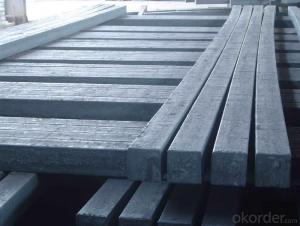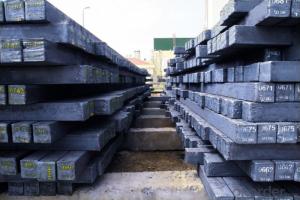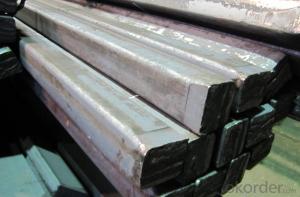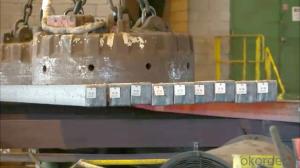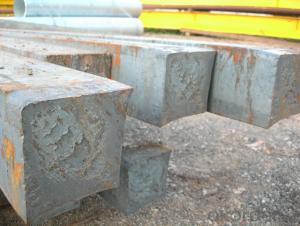Hot Rolled Steel Billet 3SP Standard 175mm
- Loading Port:
- Shanghai
- Payment Terms:
- TT OR LC
- Min Order Qty:
- 100 m.t.
- Supply Capability:
- 10000 m.t./month
OKorder Service Pledge
OKorder Financial Service
You Might Also Like
Structure of Hot Rolled Steel Billet 3SP Standard 175mm

Description of Hot Rolled Steel Billet 3SP Standard 175mm
Prepainted Rolled steel Coil is a kind of coated steel coil/sheet. With the cold rolled steel of different strength and thickness as substrate, it is produced through applying Al-Zn coat on both faces by hot dip process. In its coating, Al accounts for about 55%, Si 1.6%, while the remaining is Zn. Aluminum zinc coils enjoys both the physical protective feature and durability of Al and the electrochemical protective property of Zn. And its surface has bright silver color and regular embossed-like figure, which are highly decorative. RAL Scale Z35 Prepainted Rolled Steel Coil for Construction Roofing

Main Feature of Hot Rolled Steel Billet 3SP Standard 175mm
1.Corrosion resistance: It mainly depends on the zinc protection. When the zinc being worn,
2. Heat resistance: steel sheet has excellent heat resistance, can withstand high temperatures over 300 centigrade, and is similar with aluminized steel high temperature oxidation resistance. It often used in chimney pipes, ovens, fluorescent lighting device and the device cover.
3. Heat reflective: Galvanized steel plate heat-reflective high rate is twice as galvanized steel, often used to make insulation materials. RAL Scale Z35 Prepainted Rolled Steel Coil for Construction Roofing
Applications of Hot Rolled Steel Billet 3SP Standard 175mm
1. Construction and building: roofing; ventilating duct; handrail; partition panel;etc.
2. Electric appliance: refrigerator; washing machine; refrigerator; DVD;etc.
3.Transportation: oil tank; gas tank;road sign; etc.
4.Agriculture constructions :barn; etc.RAL Scale Z35 Prepainted Rolled Steel Coil for Construction Roofing
5.Others:vending machine; game machine; auto parts spare parts etc.
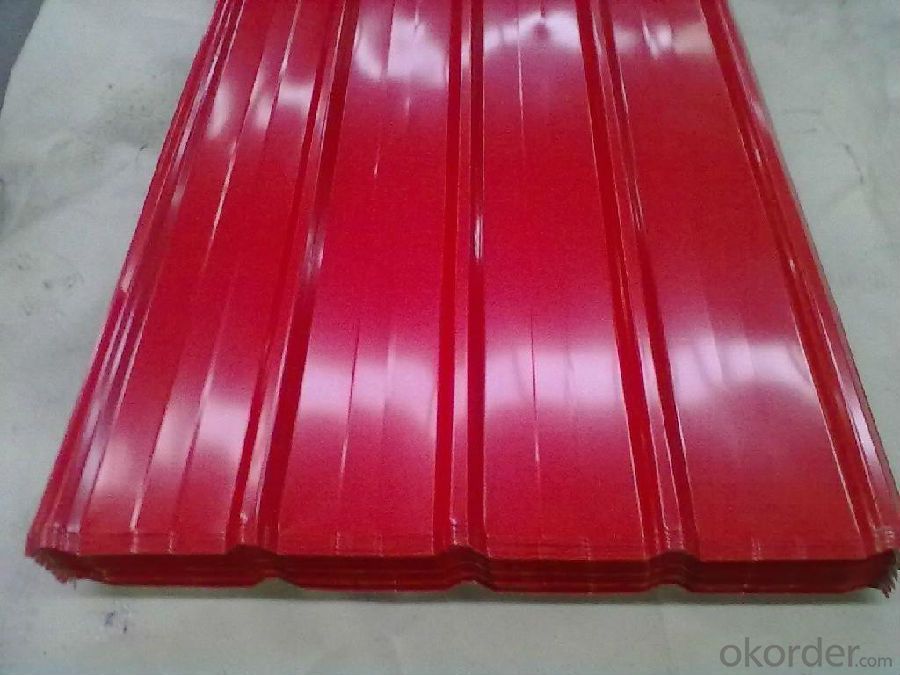
Specifications of Hot Rolled Steel Billet 3SP Standard 175mm
Product | Hot Rolled Steel Billet 3SP Standard 175mm |
Material Grade | SGCC / SGCH / DX51D+AZ, etc |
Thickness | 0.5-3.0mm |
Width | 700-1500mm |
Tolerance | Thickness: +/-0.02mm , Width:+/-2mm |
Zinc-coating | AZ30-150g/m2 |
Technique | Raw material: Hot rolled steel coil --> Cold rolled_>hot dipped galvalume |
Surface | Dried, Chromated, Unoiled,RAL Scale Z35 Prepainted Rolled Steel Coil for Construction Roofing |
Spangle | Regular spangle , small spangle, zero spangle |
ID | 508MM 610MM |
Coil weight | 25MT max |
Export package | Cardboard inner sleeves, Waterproof paper, galvanized steel covered and steel strip packed |
FAQ of Hot Rolled Steel Billet 3SP Standard 175mm
We have organized several common questions for our clients,may help you sincerely:
1. What is the minimum order quantity ?
Our MOQ is 100 mt for each size each specification. Usually we can offer discount if can buy large QTY once. RAL Scale Z35 Prepainted Rolled Steel Coil for Construction Roofing
2. How long can we receive the product after ordering?
Our general delivery time is 30 days after confirmation, but so some special orders, we have offer special delivery time
3. How to guarantee the quality of the products?
We have established the international advanced quality management system ,every link from raw material to final product we have strict quality test;We resolutely put an end to unqualified products flowing into the market. At the same time, we will provide necessary follow-up service assurance.
4. What is the payment?
We accept T/T, L/C
- Q:What are the different types of steel billet casting methods?
- There are several different types of steel billet casting methods, including continuous casting, centrifugal casting, and ingot casting. Continuous casting involves the continuous pouring of molten steel into a water-cooled mold, resulting in a continuous solidified billet. Centrifugal casting utilizes centrifugal force to pour the molten steel into a rotating mold, creating a cylindrical billet. Ingot casting involves pouring molten steel into a stationary mold to create a solidified ingot shape, which is then further processed into billets.
- Q:Can steel billets be polished for improved surface finish?
- Yes, steel billets can be polished to achieve an improved surface finish. Polishing is a mechanical process that involves removing a thin layer of the material's surface to smooth out any imperfections or roughness. It can be done using various techniques such as abrasive polishing, chemical polishing, or electrochemical polishing. Polishing steel billets not only enhances their aesthetic appeal but also improves their functional properties. A polished surface reduces friction, which can be beneficial in applications where smooth movement or reduced wear is required. Additionally, a polished surface can improve the corrosion resistance of steel by creating a barrier against environmental factors. However, it is important to note that the extent to which a steel billet can be polished depends on its composition and properties. Some alloys may be more easily polished than others, and certain surface finishes may require more extensive polishing processes. It is also crucial to consider the desired application and the specific requirements for the steel billets before deciding on the appropriate polishing method.
- Q:What are the different types of surface treatment methods used for steel billets?
- Steel billets can undergo various surface treatment methods to serve specific purposes. Here are some commonly employed techniques: 1. Pickling: By immersing steel billets in an acidic solution, typically hydrochloric or sulfuric acid, any scale or oxide layers on the surface can be eliminated. Pickling enhances the surface finish and readies the steel for further processing. 2. Shot Blasting: This method involves propelling high-velocity small metal or ceramic particles onto the steel billet surface. The process effectively removes rust, scale, and contaminants, resulting in a clean and smooth finish. 3. Grinding: To eradicate imperfections from the steel billet surface, mechanical abrasive wheels are utilized. Grinding can achieve a specific surface roughness, making it ideal for precision and accuracy requirements. 4. Acid Etching: By applying an acid solution to the steel billet surface, a controlled roughness or texture can be created. This enhances subsequent coating or paint adhesion. 5. Galvanizing: A layer of zinc is applied to the steel billets in this popular method. Zinc acts as a sacrificial barrier, providing excellent corrosion resistance and protecting the underlying steel from oxidation. 6. Powder Coating: Electrostatically applying a dry powder to the steel billet surface characterizes this technique. Upon heating, the powder melts and forms a protective layer known for its durability, corrosion resistance, and ability to offer diverse decorative finishes. 7. Passivation: This chemical process aims to enhance the corrosion resistance of stainless steel billets. It involves eliminating iron contaminants and forming a passive oxide layer that safeguards the steel from oxidation. These examples represent only a fraction of the surface treatment methods available for steel billets. The selection of a method depends on factors like desired surface finish, intended steel application, and required level of corrosion resistance.
- Q:How do steel billets contribute to the energy industry?
- Steel billets play a crucial role in the energy industry by serving as the primary raw material for the manufacturing of various energy-related equipment and infrastructure. Steel billets, which are semi-finished steel products, are used extensively in the construction of power plants, oil and gas pipelines, wind turbines, and other energy infrastructure projects. One of the key applications of steel billets in the energy industry is in the production of power plant components. Steel billets are used to manufacture various parts of power plants, including boilers, turbines, and generators. These components require a high level of strength, durability, and resistance to high temperatures and pressure, which steel billets can provide. By using steel billets, power plant manufacturers can ensure the reliability and longevity of their equipment, contributing to the overall efficiency and stability of the energy generation process. Steel billets are also essential for the construction of oil and gas pipelines. These pipelines are crucial for the transportation of oil, natural gas, and other energy resources from production sites to refineries and end-users. Steel billets are used to manufacture the large-diameter pipes that form the backbone of these pipelines. The strength, toughness, and corrosion resistance of steel billets ensure the integrity and safety of the pipeline infrastructure, minimizing the risk of leaks or failures that could result in energy supply disruptions or environmental damage. In addition, steel billets are utilized in the production of wind turbines, which are a rapidly growing source of renewable energy. The towers and foundations of wind turbines are typically made of steel, and steel billets are used to manufacture these components due to their exceptional strength and load-bearing capabilities. By utilizing steel billets, wind turbine manufacturers can construct tall and sturdy towers that can support the rotor and ensure the efficient conversion of wind energy into electricity. Overall, steel billets contribute significantly to the energy industry by enabling the construction of robust and reliable infrastructure. The strength, durability, and versatility of steel billets make them an ideal material for energy-related projects, helping to ensure the efficient and sustainable generation, transportation, and utilization of energy resources.
- Q:How are steel billets used in the manufacturing of industrial machinery parts?
- Steel billets are an essential component in the manufacturing of industrial machinery parts due to their unique properties and versatility. These billets are semi-finished steel products that are typically cast in a square or rectangular shape. They serve as the starting material for various industrial machinery parts, including gears, shafts, pistons, and other critical components. The first step in utilizing steel billets is to heat them to a specific temperature, which allows for easier manipulation and shaping. Once heated, the billets undergo a process called hot rolling, where they are passed through a series of rollers to reduce their cross-sectional area and increase their length. This process not only enhances the strength and durability of the steel but also refines its microstructure, resulting in improved mechanical properties. After hot rolling, the steel billets are typically further processed through machining operations such as cutting, drilling, milling, and grinding to achieve the desired dimensions and specifications required for specific machinery parts. These operations ensure precision and accuracy, allowing for seamless integration of the parts into the overall machinery assembly. Steel billets are particularly favored in the manufacturing of industrial machinery parts due to their high strength, toughness, and resistance to wear and tear. Their excellent machinability enables complex designs and intricate patterns to be achieved, ensuring optimal functionality and performance of the machinery. Moreover, steel billets can be easily welded, making them suitable for joining multiple parts together to create more substantial and robust structures. In conclusion, steel billets play a crucial role in the manufacturing of industrial machinery parts. By providing a strong, durable, and versatile starting material, they enable the creation of precise and reliable components that ensure the smooth operation of industrial machinery in various sectors such as manufacturing, construction, and transportation.
- Q:How are steel billets used in the production of pipe fittings?
- Steel billets are used in the production of pipe fittings as the starting material. These billets are heated and then shaped into the desired form through processes like forging, machining, or casting, to create the various types of pipe fittings such as elbows, tees, and reducers. The steel billets provide the necessary strength and durability required for pipe fittings to withstand high pressures and temperatures in plumbing and industrial applications.
- Q:How do steel billets contribute to the manufacturing of water and wastewater treatment equipment?
- Steel billets play a crucial role in the manufacturing of water and wastewater treatment equipment. These billets are essentially semi-finished steel products that are used as raw materials for various industrial applications. When it comes to the water and wastewater treatment industry, steel billets are utilized in the production of key components such as tanks, pipes, valves, and pumps. One of the primary reasons steel billets are favored in this industry is due to their excellent strength and durability. Water and wastewater treatment equipment are subjected to harsh operating conditions, including exposure to corrosive chemicals, high pressure, and extreme temperatures. Steel billets, made from high-quality materials such as carbon steel or stainless steel, offer the necessary strength and resistance to withstand these demanding environments. Furthermore, steel billets can be easily fabricated and formed into different shapes and sizes, making them highly versatile for manufacturing water and wastewater treatment equipment. These billets can be forged, rolled, or extruded to create components with precise specifications, ensuring a perfect fit and optimal functionality. The corrosion resistance of stainless steel billets is particularly valuable in water and wastewater treatment equipment. These billets are highly resistant to rust and corrosion, preventing contamination of the water supply and ensuring the longevity of the equipment. Stainless steel billets are also hygienic, making them suitable for applications where maintaining water quality and cleanliness is of utmost importance. Additionally, steel billets offer cost-effectiveness in the manufacturing process. The abundance of steel as a material and its recyclability make it a cost-efficient choice for producing water and wastewater treatment equipment. The long lifespan of steel components also reduces the need for frequent replacements, resulting in lower maintenance and operational costs. In summary, steel billets are essential in the manufacturing of water and wastewater treatment equipment due to their strength, durability, versatility, corrosion resistance, and cost-effectiveness. These billets provide the necessary raw materials to create robust and reliable components that can withstand the challenging conditions of the water treatment industry.
- Q:What is the active carbon. What is the difference with the charcoal?
- The chemical activation method. The activator of discharged gas, or by activating agent impregnated material, after the high temperature treatment can be activated carbon. The activated carbon has a microcrystalline structure, crystallite alignment completely irregular. The micro crystal (radius of less than 20, a: = 10-10 m), transition hole (radius 20 ~ 1000), big hole (radius of 1000 ~ 100000), so it has great inner surface, the surface area of 500 to 1700 meters / 2 grams.
- Q:Iron type frequency furnace, billet 150, continuous casting billet between the hole, please help net friend to find the original, please ask non answer, not Xie, please mention, understand enough, please resume me
- Production: 1 steel and 2 steel alloy or damp; for ladle lining refractory and no baking; otherwise the whole section are 3 billet bubble deposit if the situation is steel quality problems and the main problems of alloy billet; if the bubble is mainly between now and the relationship between process equipment (including continuous casting are clearly some problems of continuous casting machine the parameters of a)
- Q:Are steel billets used in the production of household appliances?
- Indeed, steel billets find application in the manufacturing of household appliances. Serving as intermediate steel products, steel billets are employed as primary materials across various industries, encompassing the production of household appliances. Following the process of heating, these billets are either rolled or forged into diverse forms and dimensions, thereby fabricating essential components such as sheets, plates, rods, and bars, pivotal in the creation of appliances. Steel, due to its robustness, longevity, and ability to resist corrosion, becomes a favored choice in the realm of household appliances. Consequently, steel is extensively utilized in the production of a wide array of household appliances, including refrigerators, washing machines, dishwashers, ovens, and several others.
1. Manufacturer Overview |
|
|---|---|
| Location | |
| Year Established | |
| Annual Output Value | |
| Main Markets | |
| Company Certifications | |
2. Manufacturer Certificates |
|
|---|---|
| a) Certification Name | |
| Range | |
| Reference | |
| Validity Period | |
3. Manufacturer Capability |
|
|---|---|
| a)Trade Capacity | |
| Nearest Port | |
| Export Percentage | |
| No.of Employees in Trade Department | |
| Language Spoken: | |
| b)Factory Information | |
| Factory Size: | |
| No. of Production Lines | |
| Contract Manufacturing | |
| Product Price Range | |
Send your message to us
Hot Rolled Steel Billet 3SP Standard 175mm
- Loading Port:
- Shanghai
- Payment Terms:
- TT OR LC
- Min Order Qty:
- 100 m.t.
- Supply Capability:
- 10000 m.t./month
OKorder Service Pledge
OKorder Financial Service
Similar products
New products
Hot products
Related keywords
